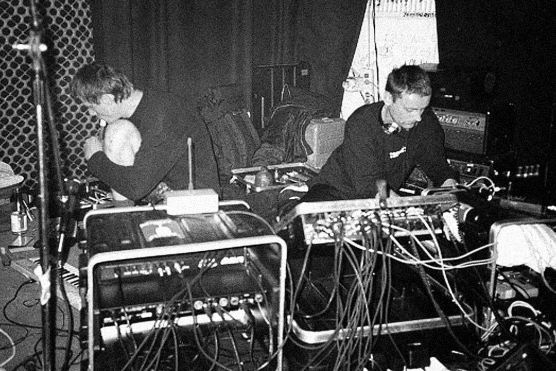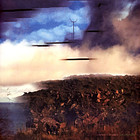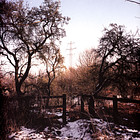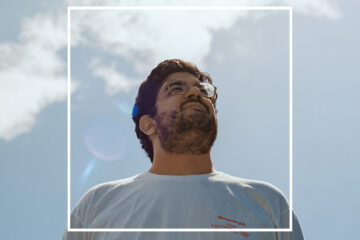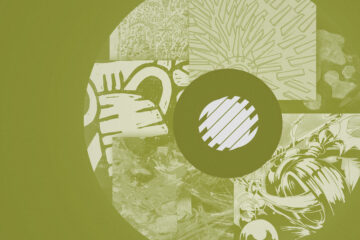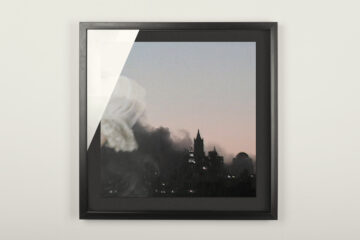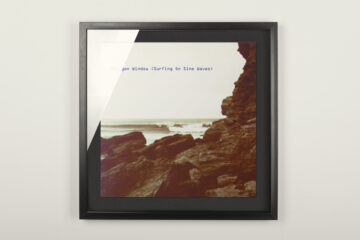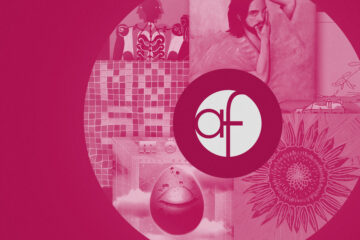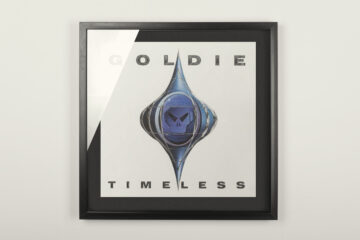They could neither play instruments, nor were they interested in what was happening in the world of music in Britain: when, through the intercession of a certain Lisa Hale, Ben Ponton, Robin Storey and Peter Jensen launched the artists collective Zoviet France in Newcastle-upon-Tyne in northern England in 1979, punk was in the throes of death and industrial lay on the birthing table. Thatcherism turned back the clock on social achievement and, in addition to social degradation, once again forced the class struggle from above. Not wishing to be digested by the exploitative compulsion of the entertainment industry or any other industry for that matter, Zoviet France insisted on anonymity from the very beginning throughout the eighties, as radically as perhaps only The Residents before them.
As musical amateurs and cultural provocateurs, they didn’t play concerts, refused to give interviews, and refused to be featured on compilations, despite numerous invitations. However, they never made a secret of their personal inspirations: Can and Neu!, the whole of the Krautrock genre, early Kraftwerk and, of course, Throbbing Gristle were just as important to the genesis of their work as Pierre Boulez, John Cage and Luciano Berio. »I think the unifying element in all this stuff is actually noise. Noise is a non-musical sound format that you can find in Motörhead as well as Stockhausen«, Ponton once said in an interview with EST magazine.
Much like other big names in the first industrial wave – 23 Skidoo, Coil, Nitzer Ebb, Psychic TV and Test Dept. – the trio played around with archetypes from indigenous cultures and images of washed-out visions of the end times, with western occultism and the mystified psychoanalysis of C. G. Jung, but also with the writings of French actor Antonin Artaud (see »The Theater And Cruelty«, 1932) and the harsh realities of an era in which the re-feudalisation of the Occident was transfigured into progressive politics and the fear of thermonuclear conflicts covered the historical horizon.
So, although the improvised recordings, held together by abrasive tape loops and intensive post-production, were never accompanied by lyrics, the iconoclastic moment in Zoviet France’s music remained easily recognisable at all times – in the consistently sought after atonality and abstract cover artwork and in their self-made instruments and use of countless objects to create sound. For this reason alone, concerts by the collective were unique and unrepeatable performance events, at which at least three senses were addressed simultaneously. At the time, only P16.D4 in Germany were so consistently transgressive.
»We were very interested in music’s inherent power to evoke different states of mind and reveal parts of our own personality that we knew absolutely nothing about, but also as a medium for accessing primitive instincts and the subconscious: stuff that goes on in everyone’s mind, but which most people don’t have an outlet for«. At the start, Zoviet France tried to tease these cathartic effects out of a classic band instrumentarium – guitar, drums, bass – but with mixed results. Although culturally isolated by their own admission, the entire collective quickly became aware of the experimental possibilities of increasingly affordable synthesisers, samplers and four-track recorders, so that as early as on »Mohnomishe« from 1983 (track 6 features one of the very first techno beats) the scaling through of hypnotically murmuring loop cascades increasingly came into focus and could later be expanded in various directions with the apocalyptic »Popular Soviet Songs And Youth Music« (1985) or »Misfits, Loony Tunes And Squalid Criminals« (1986).
Über dem industriellen Fundament türmten sich auf den Folgewerken wankende Dark-Ambient-Strukturen neben körperlichen Drones und manipulierten Feldaufnahmen, afrikanische Stammesgesänge erdrückt unter Lo-Fi-Effekten und ominöser Ritualistik – am Stück gechannelt aus einem postnuklearen Fiebertraum. Gleichzeitig entwickelte sich das Kollektiv aber auch technisch und inhaltlich weiter. Was auf »Garista« (1982) oder der »Norsch«-EP (1983) zunächst durch Soundcollagen nebst obszönem Noise zur Erprobung kam, tönte ein paar Jahre später weniger aggressiv als viel mehr meditativ und wandte sich schließlich ganz einer rohen Form von tribalem Ambient zu. »Loh Land« und »Shouting At The Ground« dürfen auf diesem Sektor nach wie vor zu den tatsächlich zeitlosen Alben gezählt werden, die nichts von ihrer Intensität verloren haben. Dass sie irgendwann als Soundtrack eines Sequels zu Barry Hines’ »Threads« eingesetzt werden, mag unwahrscheinlich sein, läge aber angesichts des Kopfkinos beim Hören verdammt nahe.
In their subsequent works, swaying dark-ambient structures tower up over the industrial foundation next to physical drones and manipulated field recordings, African tribal chants crushed under lo-fi effects and ominous ritualism – channelled in one piece from the depths of a delirious post-nuclear dream. At the same time, the collective continued to develop both technically and in terms of content. What was initially tried out on »Garista« (1982) and »Norsch« (EP, 1983) with sound collages and obscene noise, sounded less aggressive and more meditative a few years later and finally turned completely towards a raw form of tribal ambient. »Loh Land« and »Shouting At The Ground« can still count among the truly timeless albums in this genre and have lost none of their intensity. It may be unlikely that they will be used for the soundtrack to the sequel to Barry Hines’ »Threads« at some point, but it would stand to reason, given the mental images that shoot through your mind when listening to them.
At the beginning of the 90s, the creative differences within the group became irreconcilable: Jensen had already left the collective in 1984 and two members had left as quickly as they had come in the form of Paolo di Paolo and Mark Spybey, while the two frontmen in the collective, Ponton and Storey, failed to reach an agreement on how the matter of anonymity would be handled in future. Malicious tongues claim to this day that Ponton, on some sort of ego trip, pushed himself more and more to the fore, hence gradually robbing the collective of its artistic integrity. In any case, Storey had had enough after a gruelling North American tour in 1991, and from 1992 onwards continued quite successfully on his own with his follow-up project Rapoon, and has since released over 70 albums through Staalplaat, Soleilmoon and Klanggalerie. Today, three decades later, the blame for the rupture between the two can no longer be ascertained – and is probably just a minor matter anyway.
After all, there was still enough there for a final show of strength. On »Shadow, Thief Of The Sun«, released in 1991, the experiments undertaken in the last ten years, the growing technical production know-how, the thematic diffusion between the Palaeolithic and the post-apocalyptic, but above all the skills playing dozens of instruments, came together. In its enchanting opulence, the result imposes itself as the creative peak of the original main cast of Zoviet France. Although Ponton continued on his own for the most part after that and braved the often-criticised switch from analogue to digital recording, he showed from 1995 onwards about every five years he was still capable of wringing new facets or at least significant enhancements out of the project.
For example, »Digilogue« (1996) or »7.10.12« (2012) represent coherent updates to previous albums created under the impression of contemporary ambient, minimalism and drone. And even dim archive recordings like »Music For A Spaghetti Western« (2005) can hardly be held up as examples of a commercial sell-out – which others have pulled off. Since the 2010s, fresh material (most recently »The Tables Are Turning« in 2013) has appeared alongside previously unknown works, such as the surprisingly successful »Russian Heterodoxical Songs« (2020), written in 1988. The fact that Ben Ponton could probably pull dusty artefacts out of his cellar once a month ad infinitum is also evidenced by the recently released reissues of all Zoviet France albums through Vinyl-On-Demand. These have been completely remastered as individual double LPs and released in harmoniously designed wooden »chasse« boxes including bonus material.
Related reviews
»We make music all the time, just for the sake of music. Overall, about 5% of what we’ve done over the years has been released until now. We record pretty much everything we do. That’s why we have a huge archive of unreleased material from which we only ever release something which seems musically more important to us than anything else at that moment«, stated the members of the collective back in 1991. During the last three decades, this stock is unlikely to have got any smaller. So at least one thing is certain: the transmissions from the parallel dimension of Soviet France will not stop anytime soon.

